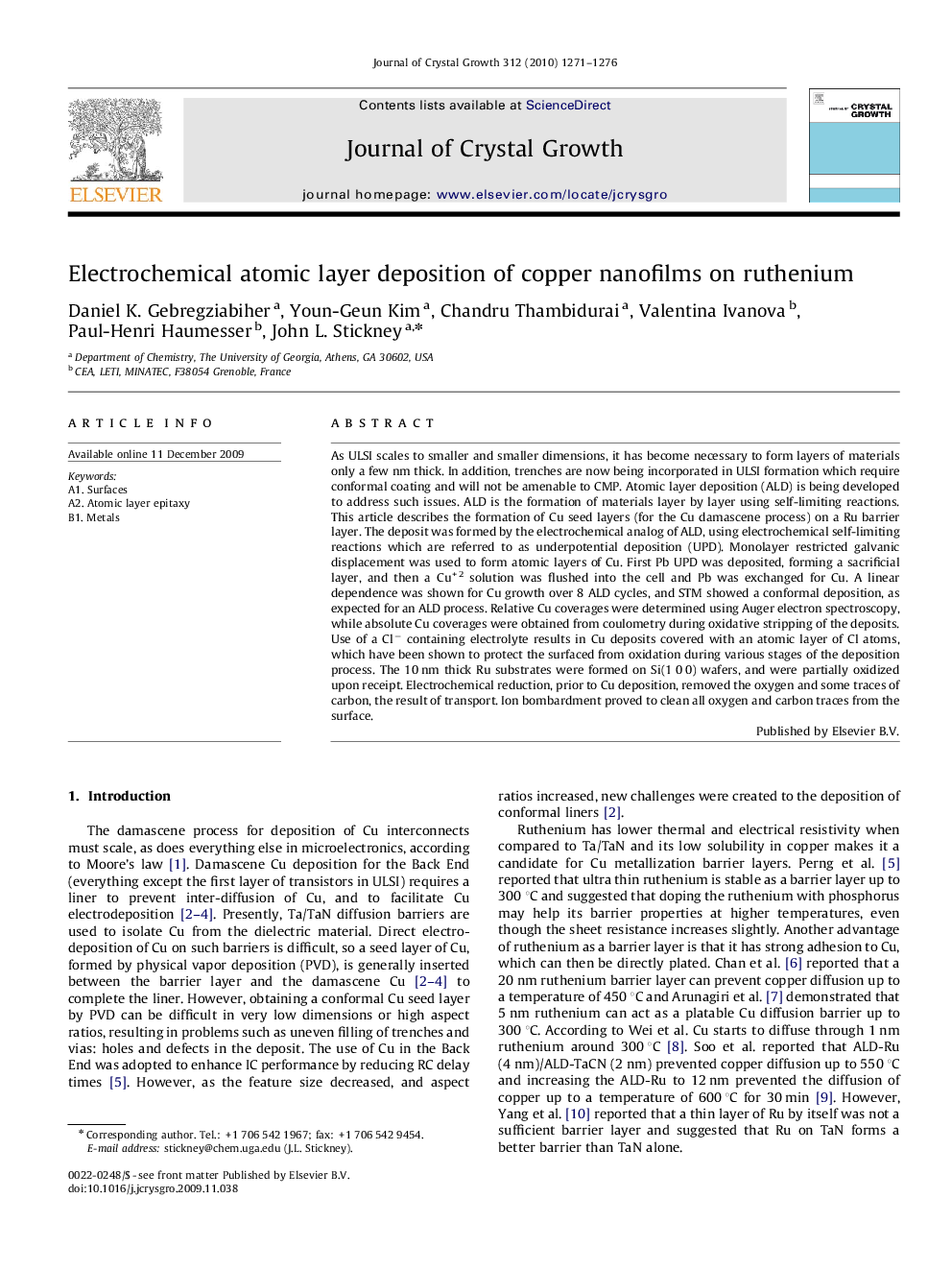| Article ID | Journal | Published Year | Pages | File Type |
|---|---|---|---|---|
| 1793490 | Journal of Crystal Growth | 2010 | 6 Pages |
As ULSI scales to smaller and smaller dimensions, it has become necessary to form layers of materials only a few nm thick. In addition, trenches are now being incorporated in ULSI formation which require conformal coating and will not be amenable to CMP. Atomic layer deposition (ALD) is being developed to address such issues. ALD is the formation of materials layer by layer using self-limiting reactions. This article describes the formation of Cu seed layers (for the Cu damascene process) on a Ru barrier layer. The deposit was formed by the electrochemical analog of ALD, using electrochemical self-limiting reactions which are referred to as underpotential deposition (UPD). Monolayer restricted galvanic displacement was used to form atomic layers of Cu. First Pb UPD was deposited, forming a sacrificial layer, and then a Cu+2 solution was flushed into the cell and Pb was exchanged for Cu. A linear dependence was shown for Cu growth over 8 ALD cycles, and STM showed a conformal deposition, as expected for an ALD process. Relative Cu coverages were determined using Auger electron spectroscopy, while absolute Cu coverages were obtained from coulometry during oxidative stripping of the deposits. Use of a Cl− containing electrolyte results in Cu deposits covered with an atomic layer of Cl atoms, which have been shown to protect the surfaced from oxidation during various stages of the deposition process. The 10 nm thick Ru substrates were formed on Si(1 0 0) wafers, and were partially oxidized upon receipt. Electrochemical reduction, prior to Cu deposition, removed the oxygen and some traces of carbon, the result of transport. Ion bombardment proved to clean all oxygen and carbon traces from the surface.
